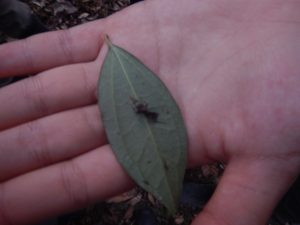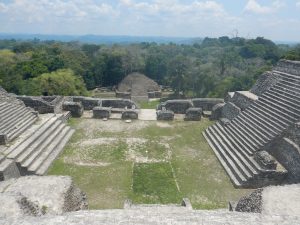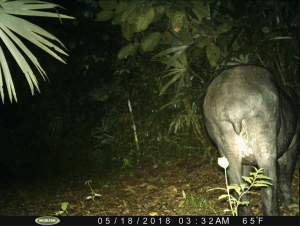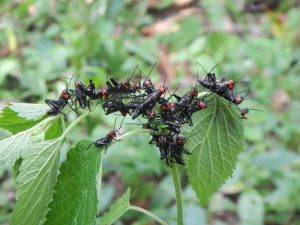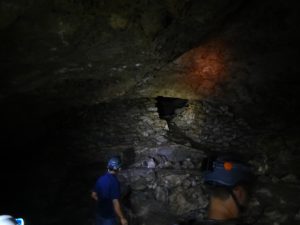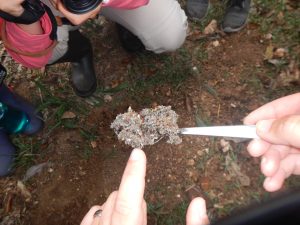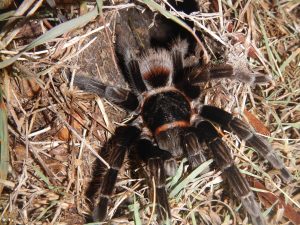Day 3: May 17th 2018 – Las Cuevas Research Station
Today we started with 5:00am bird watching. We saw several Plumbeous Kite’s, including what appeared to be a mated pair. We saw several Red-Lored Parrots perching on higher trees with light foliage, a Montezuma oropendola flying into its hanging nest, and a social fly catcher flying about. After a breakfast of eggs beans and bread, there was a coatimudi spotting, a mammal in the raccoon family. Unfortunately I managed to miss this exciting mammal siting but apparently it was spotted and soon reentered the foliage.
Soon after, we gathered to begin our first project: setting out the camera traps with a question we intend to answer. We decided to test the effect in human trails on mammal presence, hypothesizing that there would be higher mammal density, abundance, and richness in off trail locations. To test this, we identified 5 areas at a nearly equal distant radius from Las Cuevas. We hiked to each area where set one trap facing the path and one about a 7 minute walk off path. Let me tell you, this is where it gets really exciting. While placing our second location’s second trap, Professor Correa stumbled upon an leaf cutter ant nest that was 20 feet across! What she didn’t notice at first glance was that there was a 5 foot boas constrictor behind her! Both find would have been extraordinary finds on their own, but I think we’d almost all say that boa constrictor was something no one expect to see this trip.
As we returned to break for lunch, we saw a Plumbeous Kite catch a small rodent, likely a mouse or rat from the grasses. It shared the meal with its mate. After lunch, the rest of the walk was equally exciting with a variety of interesting bees, ants, epiphytes, trees, butterflies and more spotted. Most notable was the zombie ant we found on the bottom of leaf which has been parasitized by fungi and had walked up a plant to allow the fungi to grow and disperse inside its dead body. Creepy, but fascinating. I will admit I almost dismissed the site as particular gross dirt before asking Professor Solomon what it was.
After the hike, we listened to a talk from the director of the FCE which manages the Chiquibul Forest region and its conservation. He spoke about the difficulty in conserving such areas and how few understand the true beauty of the Chiquibul. He, interestingly, also spoke about the border conflict between Guatemala and Belize, the extent of which was news to a lot of us. After a dinner of beef, beans, mashed potatoes, and tortillas, we had lectures on Arachnids, Ants, and The Paradox of the Tropical Soil. Off to bed!

